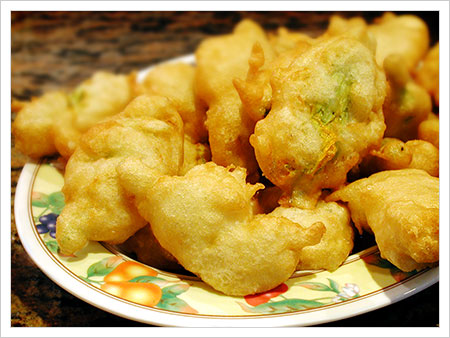In Italy's boot and heel, eggplant reigns supreme. Whether fried, char-grilled or teamed with red sauce, this ink-purple verdura is at the heart of countless rustic recipes.
Historically, Italy's south was poorer and more rural than the north. Its cuisine reflects this reality -- rich in local vegetables and seafood but short on more expensive red meats. Carne -- beef, pork and lamb -- was a pricey treat reserved for Sunday dinners or dry-cured as salami.
In southern Italian kitchens, eggplant fills the role that cutlets or steak play in richer regions. People make eggplant meatballs (polpette di melanzane) throughout the south, substituting ground meat with eggplant and bread crumbs.
Melanzane in agrodolce is common in Sicly, Calabria and Campania. Grilled or pan-fried eggplant are dressed in a tangy slurry of red wine vinegar, sugar, garlic and herbs. Porous eggplant will sponge up the tart marinade. Because the glaze is vinegar-based, the dish will last up to a week in the fridge. Serve chilled or at room temperature.
SUPERMARKET TIP:
Italian eggplants are thinner, longer and all-around tinier than American supermarket varietals. If possible, look for either "Italian eggplant" or "Japanese eggplant." Gigantic eggplants can have a bitter taste.
INGREDIENTS:
- 4 or 5 eggplants, cubed
- 1 sweet onions, diced
- 1 cup of good red wine vinegar
- 3 garlic cloves, minced
- 1 tablespoon sugar
- 1 tablespoon capers
- Fresh mint or flat-leaf parsley, chopped
- Salt & pepper
 | ||||||
| Cut the eggplants into cubes. For tips on cubing an eggplant, go here: How to cube an eggplant | . |
 |
| In a large frying pan, heat 4-5 tablespoons of extra virgin olive oil over medium heat. Olive oil has a low burn temperature, so be careful not to get it too hot. It will smoke and taste bad. Pan fry the cubed eggplant until each cube has softened and is golden brown / lightly caramelized on all sides -- about 8-10 minutes. Cook the eggplant in batches. You won't be able to cook it all at once. Fry about 20 cubes at a time. You may need to add more olive oil after cooking a batch. Remove the browned eggplant and place it in a large mixing bowl. Then, cook the onion on medium-low heat in the same pan until translucent. Add the cooked onion to the bowl with the caramelized eggplant. Photo: www.ideericette.it |
 |
When the eggplant is done, make the marinade. Whisk the minced garlic, red wine vinegar, fresh herbs, capers and sugar together in a bowl. If you are cooking large eggplants, you will need to double the marinade proportions. Taste the marinade and add salt and pepper. Pour the marinade over the pan-fried eggplant and onion, tossing the mixture. Let the eggplant sit at room temperature for 30 minutes, mixing every 5 minutes to ensure that the marinade is evenly distributed. This photo is from www.mondodelgusto.it |





